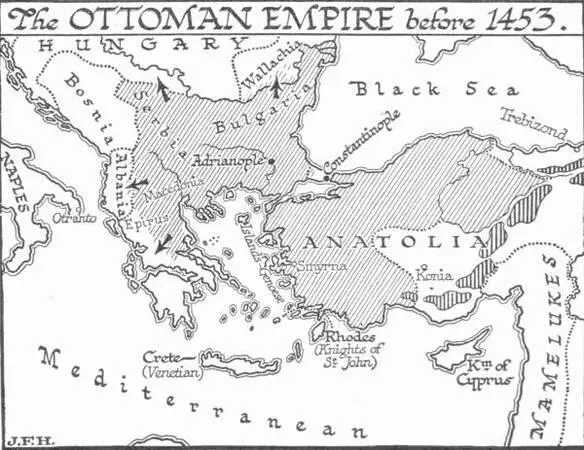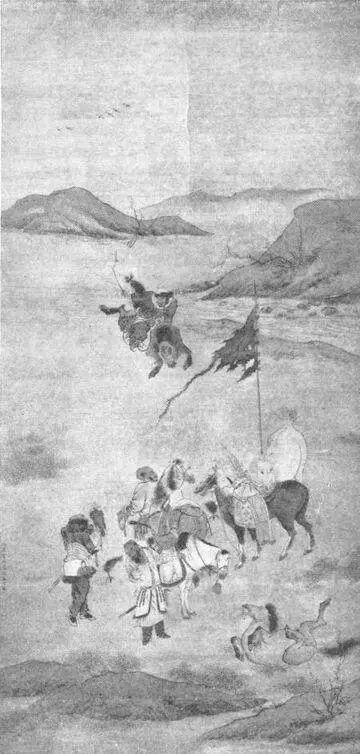Herbert Wells - A Short History of the World
Здесь есть возможность читать онлайн «Herbert Wells - A Short History of the World» весь текст электронной книги совершенно бесплатно (целиком полную версию без сокращений). В некоторых случаях можно слушать аудио, скачать через торрент в формате fb2 и присутствует краткое содержание. Год выпуска: 2011, Жанр: История, на английском языке. Описание произведения, (предисловие) а так же отзывы посетителей доступны на портале библиотеки ЛибКат.
- Название:A Short History of the World
- Автор:
- Жанр:
- Год:2011
- ISBN:нет данных
- Рейтинг книги:4 / 5. Голосов: 1
-
Избранное:Добавить в избранное
- Отзывы:
-
Ваша оценка:
- 80
- 1
- 2
- 3
- 4
- 5
A Short History of the World: краткое содержание, описание и аннотация
Предлагаем к чтению аннотацию, описание, краткое содержание или предисловие (зависит от того, что написал сам автор книги «A Short History of the World»). Если вы не нашли необходимую информацию о книге — напишите в комментариях, мы постараемся отыскать её.
A Short History of the World — читать онлайн бесплатно полную книгу (весь текст) целиком
Ниже представлен текст книги, разбитый по страницам. Система сохранения места последней прочитанной страницы, позволяет с удобством читать онлайн бесплатно книгу «A Short History of the World», без необходимости каждый раз заново искать на чём Вы остановились. Поставьте закладку, и сможете в любой момент перейти на страницу, на которой закончили чтение.
Интервал:
Закладка:
His successor, Ogdai Khan, continued this astonishing career of conquest. His armies were organized to a very high level of efficiency; and they had with them a new Chinese invention, gunpowder, which they used in small field guns. He completed the conquest of the Kin Empire and then swept his hosts right across Asia to Russia (1235), an altogether amazing march. Kieff was destroyed in 1240, and nearly all Russia became tributary to the Mongols. Poland was ravaged, and a mixed army of Poles and Germans was annihilated at the battle of Liegnitz in Lower Silesia in 1241. The Emperor Frederick II does not seem to have made any great efforts to stay the advancing tide.

“It is only recently,” says Bury in his notes to Gibbon’s Decline and Fall of the Roman Empire , “that European history has begun to understand that the successes of the Mongol army which overran Poland and occupied Hungary in the spring of A.D. 1241 were won by consummate strategy and were not due to a mere overwhelming superiority of numbers. But this fact has not yet become a matter of common knowledge; the vulgar opinion which represents the Tartars as a wild horde carrying all before them solely by their multitude, and galloping through Eastern Europe without a strategic plan, rushing at all obstacles and overcoming them by mere weight, still prevails. . . .
“It was wonderful how punctually and effectually the arrangements were carried out in operations extending from the Lower Vistula to Transylvania. Such a campaign was quite beyond the power of any European army of the time, and it was beyond the vision of any European commander. There was no general in Europe, from Frederick II downward, who was not a tyro in strategy compared to Subutai. It should also be noticed that the Mongols embarked upon the enterprise with full knowledge of the political situation of Hungary and the condition of Poland—they had taken care to inform themselves by a well-organized system of spies; on the other hand, the Hungarians and the Christian powers, like childish barbarians, knew hardly anything about their enemies.”

But though the Mongols were victorious at Liegnitz, they did not continue their drive westward. They were getting into woodlands and hilly country, which did not suit their tactics; and so they turned southward and prepared to settle in Hungary, massacring or assimilating the kindred Magyar, even as these had previously massacred and assimilated the mixed Scythians and Avars and Huns before them. From the Hungarian plain they would probably have made raids west and south as the Hungarians had done in the ninth century, the Avars in the seventh and eighth and the Huns in the fifth. But Ogdai died suddenly, and in 1242 there was trouble about the succession, and recalled by this, the undefeated hosts of Mongols began to pour back across Hungary and Roumania towards the east.
Thereafter the Mongols concentrated their attention upon their Asiatic conquests. By the middle of the thirteenth century they had conquered the Sung Empire. Mangu Khan succeeded Ogdai Khan as Great Khan in 1251, and made his brother Kublai Khan governor of China. In 1280 Kublai Khan had been formally recognized Emperor of China, and so founded the Yuan dynasty which lasted until 1368. While the last ruins of the Sung rule were going down in China, another brother of Mangu, Hulagu, was conquering Persia and Syria. The Mongols displayed a bitter animosity to Islam at this time, and not only massacred the population of Bagdad when they captured that city, but set to work to destroy the immemorial irrigation system which had kept Mesopotamia incessantly prosperous and populous from the early days of Sumeria. From that time until our own Mesopotamia has been a desert of ruins, sustaining only a scanty population. Into Egypt the Mongols never penetrated; the Sultan of Egypt completely defeated an army of Hulagu’s in Palestine in 1260.
After that disaster the tide of Mongol victory ebbed. The dominions of the Great Khan fell into a number of separate states. The eastern Mongols became Buddhists, like the Chinese; the western became Moslim. The Chinese threw off the rule of the Yuan dynasty in 1368, and set up the native Ming dynasty which flourished from 1368 to 1644. The Russians remained tributary to the Tartar hordes upon the south-east steppes until 1480, when the Grand Duke of Moscow repudiated his allegiance and laid the foundation of modern Russia.

TARTAR HORSEMEN
(From a Chinese Print in the British Museum)
In the fourteenth century there was a brief revival of Mongol vigour under Timurlane, a descendant of Jengis Khan. He established himself in Western Turkestan, assumed the title of Grand Khan in 1369, and conquered from Syria to Delhi. He was the most savage and destructive of all the Mongol conquerors. He established an empire of desolation that did not survive his death. In 1505, however, a descendant of this Timur, an adventurer named Baber, got together an army with guns and swept down upon the plains of India. His grandson Akbar (1556-1605) completed his conquests, and this Mongol (or “Mogul” as the Arabs called it) dynasty ruled in Delhi over the greater part of India until the eighteenth century.

One of the consequences of the first great sweep of Mongol conquest in the thirteenth century was to drive a certain tribe of Turks, the Ottoman Turks, out of Turkestan into Asia Minor. They extended and consolidated their power in Asia Minor, crossed the Dardanelles and conquered Macedonia, Serbia and Bulgaria, until at last Constantinople remained like an island amongst the Ottoman dominions. In 1453 the Ottoman Sultan, Muhammad II, took Constantinople, attacking it from the European side with a great number of guns. This event caused intense excitement in Europe and there was talk of a crusade, but the day of the crusades was past.
In the course of the sixteenth century the Ottoman Sultans conquered Bagdad, Hungary, Egypt and most of North Africa, and their fleet made them masters of the Mediterranean. They very nearly took Vienna, and they exacted it tribute from the Emperor. There were but two items to offset the general ebb of Christian dominion in the fifteenth century. One was the restoration of the independence of Moscow (1480); the other was the gradual reconquest of Spain by the Christians. In 1492, Granada, the last Moslem state in the peninsula, fell to King Ferdinand of Aragon and his Queen Isabella of Castile.
But it was not until as late as 1571 that the naval battle of Lepanto broke the prick of the Ottomans, and restored the Mediterranean waters to Christian ascendancy.
XLIX
THE INTELLECTUAL REVIVAL OF THE EUROPEANS
THROUGHOUT the twelfth century there were many signs that the European intelligence was recovering courage and leisure, and preparing to take up again the intellectual enterprises of the first Greek scientific enquiries and such speculations as those of the Italian Lucretius. The causes of this revival were many and complex. The suppression of private war, the higher standards of comfort and security that followed the crusades, and the stimulation of men’s minds by the experiences of these expeditions were no doubt necessary preliminary conditions. Trade was reviving; cities were recovering ease and safety; the standard of education was arising in the church and spreading among laymen. The thirteenth and fourteenth centuries were a period of growing, independent or quasi-independent cities; Venice, Florence, Genoa, Lisbon, Paris, Bruges, London, Antwerp, Hamburg, Nuremberg, Novgorod, Wisby and Bergen for example. They were all trading cities with many travellers, and where men trade and travel they talk and think. The polemics of the Popes and princes, the conspicuous savagery and wickedness of the persecution of heretics, were exciting men to doubt the authority of the church and question and discuss fundamental things.
Читать дальшеИнтервал:
Закладка:
Похожие книги на «A Short History of the World»
Представляем Вашему вниманию похожие книги на «A Short History of the World» списком для выбора. Мы отобрали схожую по названию и смыслу литературу в надежде предоставить читателям больше вариантов отыскать новые, интересные, ещё непрочитанные произведения.
Обсуждение, отзывы о книге «A Short History of the World» и просто собственные мнения читателей. Оставьте ваши комментарии, напишите, что Вы думаете о произведении, его смысле или главных героях. Укажите что конкретно понравилось, а что нет, и почему Вы так считаете.








